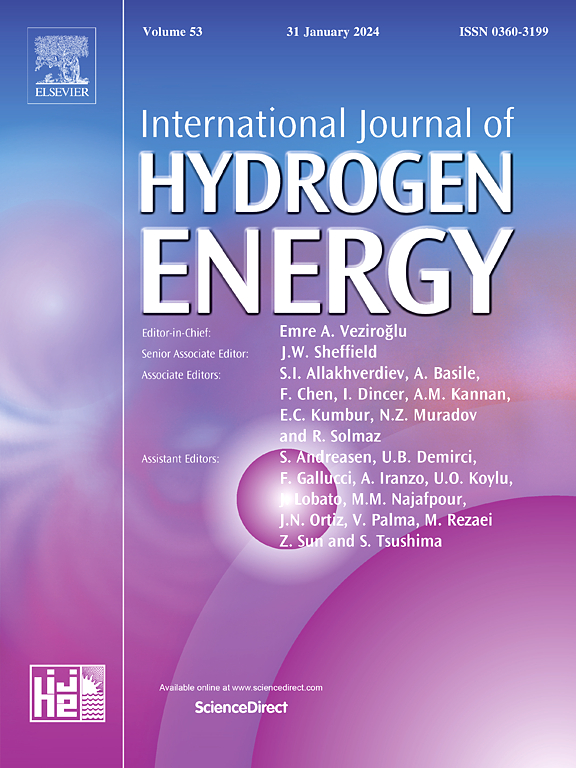Techno-economic and GIS mapping of wind-driven hydrogen production in Portugal
IF 8.1
2区 工程技术
Q1 CHEMISTRY, PHYSICAL
引用次数: 0
Abstract
The objective of this study is to evaluate the potential of the wind driven-hydrogen production in mainland Portugal from both technical and economic aspects and to create a hydrogen-wind atlas to support decision making for stakeholders and governmental organizations. To this end, large spatial-temporal and high precision wind measurements were gathered from 88 in-situ meteorological stations, strategically distributed locations across the country. These data were used as input to simulate the electricity and hydrogen production from a 20 MWe wind farm. The simulation results were interpolated using GIS tools to create the first comprehensive atlas of hydrogen production in Portugal. Results show that hydrogen production costs revealed promising results, with an LCOH2 in the best performing regions of around 3.258 €/kg and a yearly total production capacity reaching 2256 tons (with a specific production of 113 kg/kWh/year). These outcomes demonstrate the viability of implementing wind farm-electrolyzer systems for hydrogen production in Portugal and highlight the country's strong potential for both energy export and domestic use.
葡萄牙风力制氢的技术经济和GIS制图
本研究的目的是从技术和经济两个方面评估葡萄牙大陆风力驱动氢生产的潜力,并创建一个氢风地图集,以支持利益相关者和政府组织的决策。为此,从分布在全国战略位置的88个现场气象站收集了大时空、高精度的风测量数据。这些数据被用作输入来模拟一个20兆瓦风电场的电力和氢气生产。使用GIS工具对模拟结果进行插值,以创建葡萄牙第一个氢气生产综合地图集。结果表明,氢气生产成本显示出良好的结果,LCOH2在最佳区域约为3.258€/kg,年总产能达到2256吨(具体产量为113 kg/kWh/年)。这些结果证明了在葡萄牙实施风力发电场-电解槽制氢系统的可行性,并突出了该国在能源出口和国内使用方面的强大潜力。
本文章由计算机程序翻译,如有差异,请以英文原文为准。
求助全文
约1分钟内获得全文
求助全文
来源期刊

International Journal of Hydrogen Energy
工程技术-环境科学
CiteScore
13.50
自引率
25.00%
发文量
3502
审稿时长
60 days
期刊介绍:
The objective of the International Journal of Hydrogen Energy is to facilitate the exchange of new ideas, technological advancements, and research findings in the field of Hydrogen Energy among scientists and engineers worldwide. This journal showcases original research, both analytical and experimental, covering various aspects of Hydrogen Energy. These include production, storage, transmission, utilization, enabling technologies, environmental impact, economic considerations, and global perspectives on hydrogen and its carriers such as NH3, CH4, alcohols, etc.
The utilization aspect encompasses various methods such as thermochemical (combustion), photochemical, electrochemical (fuel cells), and nuclear conversion of hydrogen, hydrogen isotopes, and hydrogen carriers into thermal, mechanical, and electrical energies. The applications of these energies can be found in transportation (including aerospace), industrial, commercial, and residential sectors.
 求助内容:
求助内容: 应助结果提醒方式:
应助结果提醒方式:


